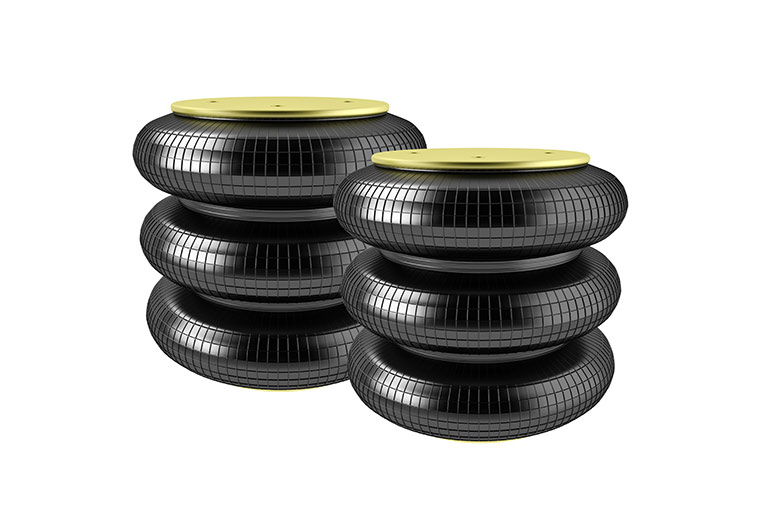When we delve into the realm of linear actuators used in industrial fluid power, our minds often gravitate towards the familiar, such as NFPA and mill-type for hydraulics, or compact round-line or extruded-aluminum body cylinders for pneumatics. These are the tried and tested construction styles. However, a lesser-known yet highly innovative player in this field is the air spring actuator.

Originally designed as a vibration and impact absorption tool, designers quickly concluded these suspension systems make robust and reliable linear actuators. The air spring offers a few unique benefits to separate them from traditional rod and barrel cylinder actuators. Whereas axial alignment is critical to an air cylinder’s reliability, air springs permit a surprising amount of axial and angular movement.
The air spring’s construction elucidates the reason for its unique advantage over misalignment. Consisting of a top and bottom plate where pressure acts upon to create force, these plates are joined by rubber bellows, which contain the air pressure required to operate. Because of the inherent elastomeric nature of the reinforced rubber bellows, they can move out of axial and angular alignment to a degree while still operating effectively.
The bellows, made of reinforced neoprene or rubber, are as durable as car tires. This robust construction ensures that you can rely on them for many years and cycles of operation before they show signs of wear. The convoluted style uses a rubber or metal ring to help stabilize the bellow, while the rolling lobe air spring folds upon itself in its retracted position, further enhancing its longevity.
Because the entire “body” of these air springs is flexible, they can stroke at an angle or experience movement between the top and bottom mounting locations within the allowances of their dimensions. For example, a lift and tilt table gets by with a single actuator rather than one for lift and one for tilt using traditional actuators.
The air spring actuator comes in large diameter options capable of up to 100,000 lb of force, although the majority of these applications are smaller sizes. Air springs make the perfect contributing actuator to vehicle or aircraft simulators, where the Z-axis (up and down) requires a wide, stable platform with low installed height, leaving the X- and Y-axis to traditional hydraulic cylinders. Essentially, the Y-axis cylinders control the fore/aft tilt of the machine while the X-axis cylinders control the side-to-side motion, making for an inexpensive motion control application.
Air springs make great unconventional options for pressing applications, such as pressing oils, bonding and laminating or stamping and embossing. The air spring is especially suitable for sensitive products, such as wine grapes. The press platen doesn’t have to remain perpendicular as it presses, so any spots with larger bunches of grapes will allow the air spring to provide even force on the uneven product.
With their simple construction and competitive price, you can expect to see more air springs used for industrial applications. Their simple and forgiving nature combined with easy repairability provides an option outside standard fixed-barrel linear actuators.
Filed Under: Components Oil Coolers, Cylinders & Actuators, Engineering Basics, Pneumatic Tips, Technologies